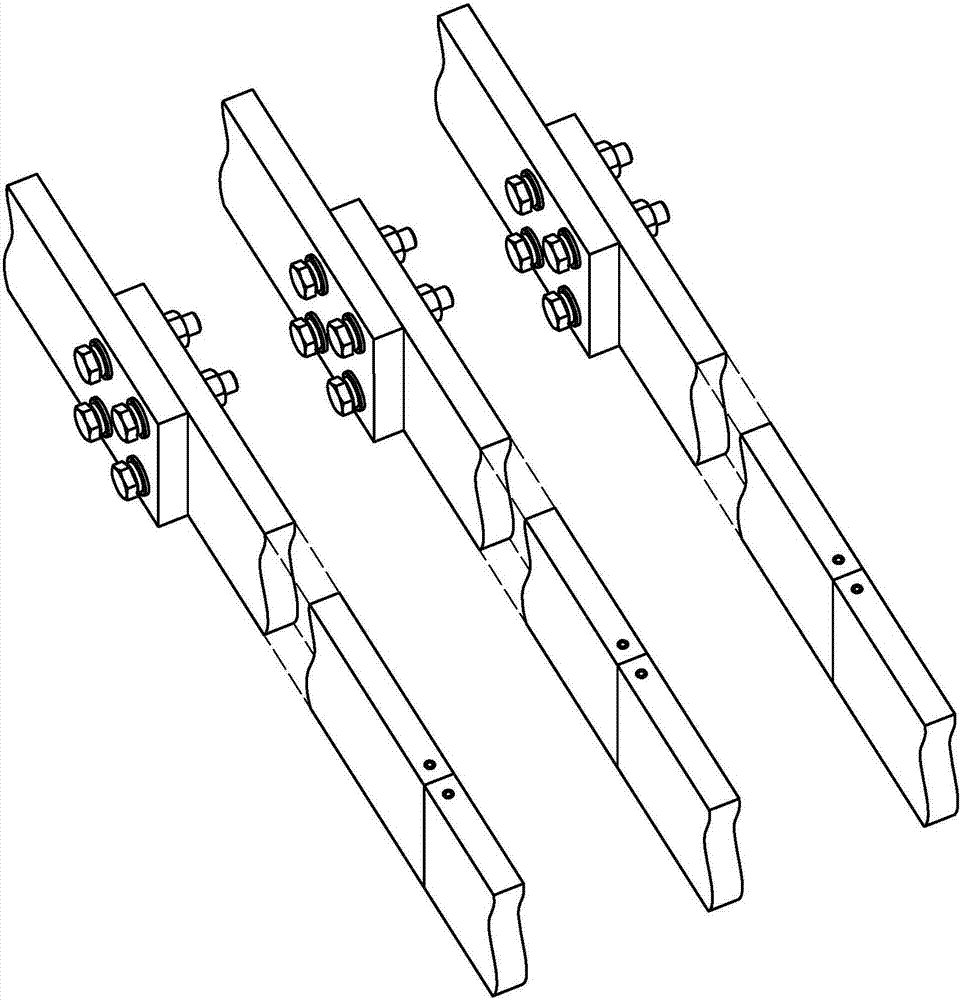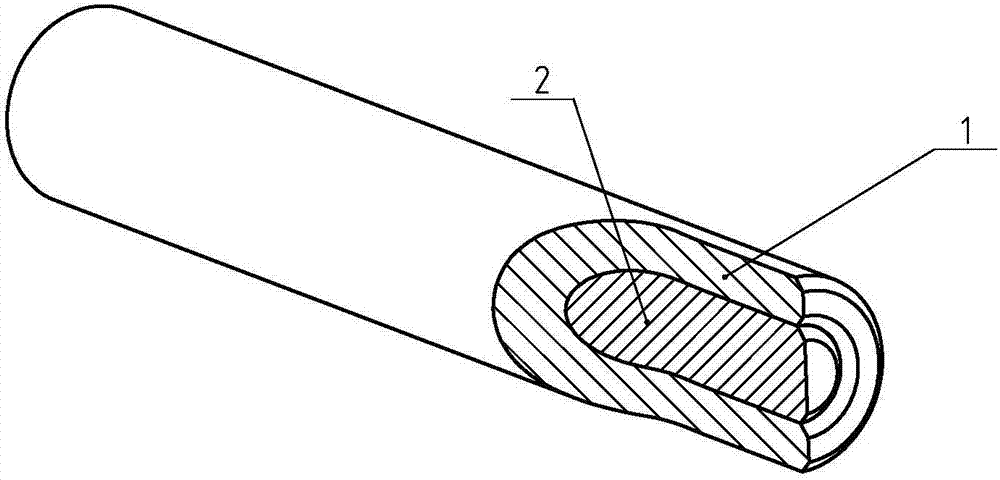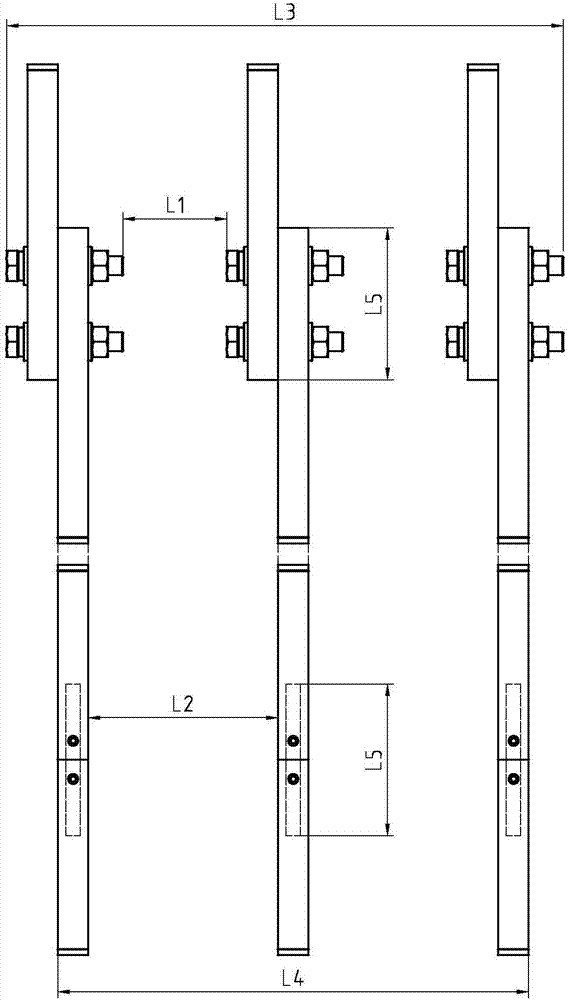Coupling Columns for Reducing Temperature Rise at Lap Joints of Electrical Busbars
A busbar lap and column connection technology, which is applied in conductive connection, busbar installation, cable installation, etc. The effect of reducing wiring width, saving resources, and reducing current density
- Summary
- Abstract
- Description
- Claims
- Application Information
AI Technical Summary
Problems solved by technology
Method used
Image
Examples
Embodiment 2
[0068] In the first embodiment, the material of the first columnar part 1 is changed to copper alloy, and the material of the first columnar part 2 is changed to aluminum alloy. Since the hardness of the alloy is relatively high, the first columnar part 2 can be stored in a low temperature environment ( 5 degrees) for a period of time (5 minutes), while the first columnar part 1 is stored in a high temperature environment (80 degrees) for a period of time (5 minutes), with the help of thermal expansion and contraction effect, the inner diameter of the first columnar part 1 can be made slightly larger, while the outer diameter of the first columnar part 1 is slightly reduced, so that the first columnar part 2 can be easily assembled into the first columnar part 1. After the assembled connecting column returns to normal temperature, the first columnar part 1 An interference fit can be achieved with the first columnar portion 2 . The diameters and lengths of the coupling columns ...
Embodiment 3
[0070] like Figure 14-15 As shown, a second through hole 7 is coaxially provided inside the second columnar part 2 , the first columnar part 6 has a hollow structure, the second columnar part 2 penetrates the first columnar part 1 , and the outer cylindrical surface of the first columnar part 1 A first through hole 6 is radially provided, the first through hole 6 communicates with the second through hole 7 , and the first through hole 6 is located in the axial middle portion of the first cylindrical portion 1 .
[0071] Due to the arrangement of the through holes 6 and 7, when the connecting column is inserted into the prefabricated hole of the first busbar, the air in the prefabricated hole can be smoothly discharged from the second through hole 7, so that the connecting column can be smoothly assembled in place , when the second busbar is sleeved into the installed coupling column, the air in the prefabricated hole of the second busbar can be smoothly discharged from the fi...
PUM
 Login to View More
Login to View More Abstract
Description
Claims
Application Information
 Login to View More
Login to View More - R&D
- Intellectual Property
- Life Sciences
- Materials
- Tech Scout
- Unparalleled Data Quality
- Higher Quality Content
- 60% Fewer Hallucinations
Browse by: Latest US Patents, China's latest patents, Technical Efficacy Thesaurus, Application Domain, Technology Topic, Popular Technical Reports.
© 2025 PatSnap. All rights reserved.Legal|Privacy policy|Modern Slavery Act Transparency Statement|Sitemap|About US| Contact US: help@patsnap.com



